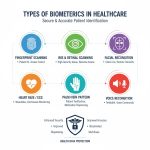P2P Payment Market Size and Forecast 2025 to 2035
The global Peer-to-Peer (P2P) Payment Market is on a remarkable growth trajectory, reflecting the rapid digital transformation of financial services worldwide. Valued at USD 3.1 trillion in 2024, the market is projected to soar to USD 13.3 trillion by 2035, registering a robust CAGR of 14.25% between 2025 and 2035. This explosive growth is underpinned by the relentless pace of innovation in information technology, the proliferation of smartphones, and the ever-increasing demand for fast, convenient, and accessible digital payment solutions.
The P2P payment ecosystem has evolved from simple money transfers between friends and family to a sophisticated network supporting a wide range of use cases, including business transactions, bill splitting, and cross-border remittances. The market’s expansion is further fueled by the rise of mobile commerce (m-commerce), which has become a dominant force in global retail. As consumers increasingly shop online and expect seamless payment experiences, P2P platforms are stepping up to deliver instant, secure, and user-friendly solutions.
The COVID-19 pandemic has acted as a catalyst, accelerating the adoption of contactless and digital payments. Health concerns and social distancing measures have driven consumers and businesses alike to embrace cashless transactions, with P2P payment apps witnessing unprecedented growth in user numbers and transaction volumes. This shift in consumer behavior is expected to persist, further propelling market growth in the coming decade.
Looking ahead, the P2P payment market is set to benefit from ongoing advancements in payment technologies such as blockchain, near field communication (NFC), and artificial intelligence. These innovations promise to enhance security, reduce transaction costs, and enable real-time, cross-border payments. Additionally, the integration of digital wallets, QR code payments, and smart contracts is making P2P transactions more versatile and accessible than ever before.
Regionally, Asia Pacific is leading the charge, driven by high smartphone penetration, government initiatives promoting cashless economies, and the widespread adoption of platforms like Alipay, WeChat Pay, and India’s UPI. North America and Europe are also significant contributors, with established players like PayPal, Venmo, and Zelle dominating the landscape.
Get a Sample Copy:- https://www.vantagemarketresearch.com/p2p-payment-market-1848/request-sample
The P2P payment market is poised for sustained, dynamic growth through 2035, reshaping the way individuals and businesses transfer money. As technology continues to evolve and consumer preferences shift towards digital-first solutions, the market will remain a hotbed of innovation and opportunity for financial institutions, fintech startups, and technology providers alike.
Key Takeaways:
- According to analysts at Vantage Market Research, the global P2P Payment Market is projected to grow from USD 3.1 trillion in 2024 to USD 13.3 trillion by 2035, at a CAGR of 14.25%.
- Rapid advancements in information technology, increased smartphone penetration, and the rise of m-commerce are major drivers of market growth.
- The COVID-19 pandemic accelerated the adoption of contactless and digital payments, with a significant surge in P2P payment app usage.
- Millennials and Gen Z are the primary users of P2P payment platforms, leveraging mobile devices for fast and convenient transactions.
- The market is segmented by transaction mode (mobile web, NFC, SMS), payment type (remote, proximity), end user (personal, business), application, and region.
- The Business-to-Business (B2B) segment currently holds the largest market share, but the Business-to-Consumer (B2C) segment is expected to grow fastest.
- Mobile web payments lead the market, while NFC technology is anticipated to experience the highest growth rate due to enhanced security and speed.
- The banking and finance sector dominates the market, but retail and e-commerce are expected to grow rapidly due to increased mobile commerce.
- Blockchain technology is being integrated into P2P payments, offering decentralized, secure, and real-time transactions, especially for cross-border payments.
- Asia Pacific leads the global market, with China and India as major contributors due to high smartphone usage and government initiatives promoting digital payments.
- North America and Europe are also significant markets, with established players like PayPal, Venmo, and Zelle driving adoption.
- Security concerns and data breaches remain challenges, but ongoing technological innovation and consumer demand for convenience continue to propel market growth.
Market Overview
The P2P payment market is experiencing a paradigm shift, driven by the convergence of mobile technology, digital commerce, and changing consumer expectations. At its core, a P2P payment is a direct transfer of funds from one individual’s bank account to another’s, typically facilitated through online platforms or mobile apps. This simplicity and convenience have made P2P payments a preferred choice for a wide range of transactions, from splitting restaurant bills to paying rent or sending remittances abroad.
The surge in mobile phone penetration and the rise of m-commerce are key factors fueling market growth. Millennials and Gen Z, who are digital natives, form the bulk of P2P payment users, leveraging their smartphones for everything from shopping to banking. The growing acceptance of online shopping and the need for instant, hassle-free payment options are further accelerating the adoption of P2P platforms.
Businesses worldwide are also adapting to this trend by offering dynamic payment options that cater to the evolving needs of their customers. Mobile payment solutions are not only fast and easy to use but also align with the global shift towards cashless economies. The COVID-19 pandemic has reinforced this trend, with both e-commerce and brick-and-mortar businesses prioritizing contactless payment methods to meet changing consumer behaviors.
As organizations continue to innovate and expand their payment offerings, the P2P payment market is set to witness sustained growth, driven by the demand for secure, efficient, and user-centric financial solutions.
P2P Payment Market Growth Factors
Several factors are contributing to the rapid expansion of the P2P payment market. The COVID-19 pandemic has been a significant driver, as health concerns have prompted consumers to seek contactless payment options. According to EastWestBank, contactless payment usage in the U.S. surged by 150% in 2020 compared to the previous year, with 87% of consumers preferring in-store purchases via contactless methods.
The widespread adoption of online and mobile banking, coupled with the increasing penetration of smartphones among younger generations, is also fueling market growth. The expansion of m-commerce in emerging markets is opening new avenues for P2P payments, enabling users to transact seamlessly across borders.
Distributed payment networks are helping organizations reduce operational costs by minimizing the need for physical branches and staff, thereby encouraging business growth. These networks also provide efficient channels for borrowers to receive funds, reducing market risks for investors. However, challenges such as data breaches and security concerns remain potential obstacles to market expansion.
On the positive side, the growing demand for fast and easy transaction services, along with the adoption of technologies like NFC, RFID, and host card emulation, is expected to create lucrative opportunities for market players. Mobile web payments are anticipated to capture a significant market share, while NFC technology is projected to grow at the fastest rate due to its enhanced security and transaction speed.
Key Segment Overview
The global P2P payment market is segmented by transaction mode, payment type, end user, application, and region. Transaction modes include mobile web payments, near field communication (NFC), SMS/direct carrier billing, and others. Payment types are categorized into remote and proximity payments. End users are divided into personal and business segments, while applications span media & entertainment, energy & utilities, healthcare, retail, hospitality & transportation, and more. Geographically, the market is analyzed across North America, Europe, Asia-Pacific, and LAMEA.
This segmentation allows for a nuanced understanding of market dynamics, enabling stakeholders to identify growth opportunities and tailor their strategies accordingly.
Type Insights
In 2024, the Business-to-Business (B2B) segment accounted for over 62% of market revenue, driven by significant investments from private equity and venture capital firms in B2B payment solutions. Companies like Rupifi are leading the way, developing comprehensive B2B checkout products and omnichannel mobile-first payment solutions for wholesalers, retailers, and distributors.
Banks are also rapidly adopting B2B mobile payments to enhance the business customer experience. Meanwhile, the Business-to-Consumer (B2C) segment is expected to grow at the fastest CAGR, fueled by the increasing use of mobile payments in e-commerce. According to Salesforce, mobile users account for 60% of global e-commerce traffic, highlighting the growing importance of digital wallets and mobile payment solutions in the B2C space.
The market is further segmented by transaction mode, with NFC/smartcards, SMS, and mobile apps offering consumers easy and hassle-free payment options. Small business loans are projected to have the largest volume share and fastest growth, particularly in countries like India and Singapore.
Technology Insights
Mobile web payments are set to lead the market, thanks to their security, flexibility, and ease of use. The growing popularity of m-commerce is a key driver, as consumers increasingly rely on mobile devices for shopping and financial transactions. NFC technology is expected to grow at the fastest rate, enabling retailers to integrate loyalty programs and allowing customers to redeem coupons quickly via smartphones.
The rise of wearable payment devices and the ongoing trend towards mobile commerce are accelerating the adoption of NFC-based payments. During the COVID-19 pandemic, banks and financial institutions introduced advanced digital payment solutions to meet the surge in demand for contactless transactions. The global increase in smartphone penetration is creating new growth opportunities for the P2P payment industry, as more consumers turn to digital platforms for their financial needs.
Application Insights
The banking and finance sector currently leads the P2P payment market, with banks aggressively promoting mobile payments to enhance customer convenience and reach unbanked populations in emerging markets. Customized payment solutions are being developed to address specific challenges in wealth management, lending, and insurance.
The retail and e-commerce industry is expected to grow at the fastest CAGR, driven by the rising number of smartphone users and the surge in mobile commerce sales. Shopping apps are becoming the preferred method for making purchases, with 54% of mobile commerce payments made through dedicated apps, according to J.P. Morgan’s 2020 E-commerce Payments Trends Report. The increasing acceptance of cross-border payments is also contributing to the growth of mobile payments in the retail sector.
Latest Updates on P2P Payment Market in 2025
Blockchain Technology:
Blockchain is revolutionizing the P2P payment landscape by offering decentralized, secure, and transparent transactions without the need for intermediaries. The technology enables real-time, multi-currency payments, making cross-border transactions faster and more affordable. Features such as secure user authentication, digital wallet integration, QR code payments, transaction history, and smart contracts are enhancing the efficiency and security of P2P payments.
Cross-Border Payments:
The evolution of global trade, digital currencies, and real-time payment systems is transforming cross-border P2P payments. Mobile wallets and online banking are making international transactions more convenient and efficient. The expansion of real-time payment systems like India’s UPI and the development of Central Bank Digital Currencies (CBDCs) are expected to further revolutionize cross-border payments, making them faster, cheaper, and more secure.
Recent Developments in P2P Payments and Related Technologies:
- May 2025: X, in partnership with Visa, announced the launch of a payment feature embedded in the X social media platform called X Money, enabling P2P payments via debit card with instant bank transfers.
- April 2025: Samsung Electronics America unveiled Samsung Wallet’s new Tap to Transfer feature for quick P2P payments.
- February 24, 2025: PPRO partnered with the European Payments Initiative (EPI) to enable Wero, a mobile-first wallet and instant account-to-account payment solution, starting with P2P transactions in Germany, France, and Belgium.
- January 28, 2025: X Money partnered with Visa to enhance its P2P payment platform, leveraging Visa Direct for real-time, secure transfers and instant payments via debit cards.
- January 2025: Meta-owned WhatsApp made its P2P payment feature available to all Indian users.
- August 15, 2024: FIS leveraged the NYCE debit network to enable streamlined P2P payments, enhancing transaction efficiency and security.
- August 15, 2024: FIS and Neural Payments partnered to offer a new P2P payment service, integrating Neural Payments’ solution into FIS’ NYCE debit network for broader bank customer access.
- May 2024: The “Real-Time Payments Tracker® Series Report: P2P Payment Potential” highlighted the surge in P2P payments and the urgent need for enhanced security measures to protect users from scams and fraud.
- March 2024: Zelle partnered with the BBB Institute and the Association of Military Banks of America (AMBA) to launch a military-focused fraud and scam education program.
- October 2, 2024: Consumer Reports highlighted a lack of transparency among major P2P payment services (Zelle, Cash App, Apple Cash, Venmo) regarding reimbursement policies for scam victims, urging clearer refund process information.
- June 2022: Alibaba.com unveiled Energy Expert, a sustainability platform for measuring, analyzing, and managing carbon emissions, offering SaaS solutions and energy-saving recommendations.
- June 2021: Mastercard launched PayPort+, providing financial institutions and professional associations with flexible access to the UK’s real-time payment infrastructure, used by Form3 and Vocalink.
Asia Pacific P2P Payment Market Size and Growth 2025 to 2035
Asia Pacific is at the forefront of the global P2P payment market, holding the highest revenue share in 2024. The region’s growth is driven by changing lifestyles, evolving online shopping trends, and high smartphone penetration. Government initiatives promoting cashless economies are creating new opportunities for fintech firms and banks to offer mobile financial solutions, particularly to underserved and unbanked populations in rural areas.
China is a major player, with high smartphone and internet penetration, rapid digitalization, and strong government support for digital payments. Leading platforms like Alipay, WeChat Pay, and UnionPay are driving the adoption of P2P payments by offering secure and convenient transaction methods. Merchants across China are increasingly accepting P2P payments, further boosting market growth.
India’s P2P payment market is thriving, thanks to the introduction of the Unified Payments Interface (UPI) by the National Payments Corporation of India (NPCI). UPI has revolutionized P2P payments, making them the most popular payment method among Indian consumers. Mobile apps like Google Pay, PhonePe, Paytm, and BHIM enable users to transfer money using virtual payment addresses, mobile numbers, and QR codes.
North America is also expected to see significant growth, driven by the presence of major market players and early adoption of advanced technologies. The rise of e-commerce and the increasing popularity of remote payments, especially during the COVID-19 pandemic, are fueling the demand for P2P payment solutions. Leading U.S. apps like Zelle, PayPal, Venmo, Cash App, Apple Pay, and Samsung Pay are setting the standard for convenience and user experience.
In Canada, the P2P payment market is expanding due to the convenience of digital platforms, the shift towards cashless transactions, and the growing adoption of online and mobile banking. The ability to split bills and share expenses digitally is particularly appealing to consumers, driving further growth in the market.
The global P2P payment market is entering a new era of growth and innovation, driven by technological advancements, changing consumer behaviors, and the ongoing shift towards digital finance. As the market continues to evolve, stakeholders must stay agile and embrace emerging trends to capitalize on the vast opportunities ahead. With its strong growth prospects and transformative potential, the P2P payment market is set to redefine the future of money movement worldwide.
Market Segmentation
Parameter
Details
Segment Covered
By Transaction Mode
- Mobile Web Payments
- Near Field Communication
- SMS/ Direct Carrier Billing
- Other Transaction Modes
By Payment Type
- Remote
- Proximity
By End User
- Personal (31.7%)
- Business (68.3%)
By Application
- Media & Entertainment
- Energy & Utilities
- Healthcare
- Retail
- Hospitality & Transportation
- Other Applications
By Region
- North America (U.S., Canada, Mexico)
- Europe (Germany, France, U.K., Italy, Spain, Nordic Countries, Benelux Union, Rest of Europe)
- Asia Pacific (China, Japan, India, New Zealand, Australia, South Korea, South-East Asia, Rest of Asia Pacific)
- Latin America (Brazil, Argentina, Rest of Latin America)
- Middle East & Africa
Companies Covered
- Alibaba.com
- Apple Inc.
- Circle International Financial Limited
- Google LLC
- One97 Communications Limited (Paytm)
- PayPal Holdings Inc.
- Square Inc.
- WePay Inc.
- Wise Payments Limited
- Zelle
Customization Scope
Enjoy complimentary report customization—equivalent to up to 8 analyst working days—with your purchase. Customizations may include additions or modifications to country, regional, or segment-level data.
Pricing and purchase options
Access flexible purchase options tailored to your specific research requirements. Explore purchase options
FAQ questions:
- What is the current size and projected growth of the global P2P Payment Market from 2025 to 2035?
- What are the main factors driving the growth of the P2P Payment Market worldwide?
- How did the COVID-19 pandemic impact the adoption of P2P payment solutions?
- Which transaction modes are most popular in the P2P Payment Market?
- What are the key technological trends shaping the future of P2P payments?
- Which regions are expected to lead the P2P Payment Market during the forecast period?
- Who are the major players in the global P2P Payment Market?
- What are the primary challenges and risks facing the P2P Payment Market?
- How is blockchain technology influencing the P2P payment landscape?
- What are the main applications and end-user segments driving demand for P2P payments?
![[Market Research Reports] – Research Google News Blog | VMR.Biz](https://www.vmr.biz/wp-content/uploads/2022/12/logo-removebg-preview.png)











